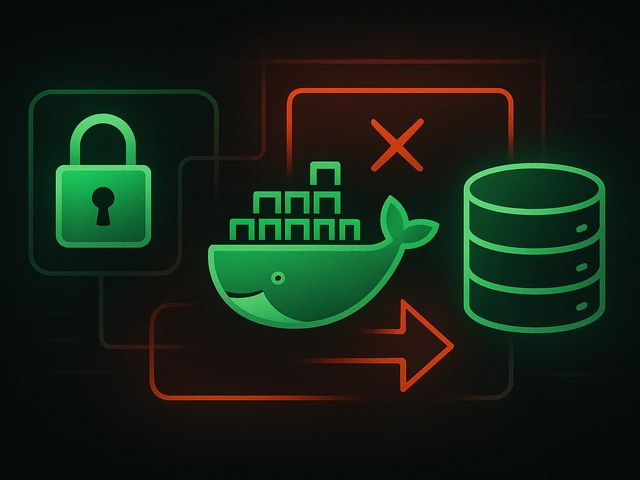
In the previous article, we considered several of the most popular operating systems that are usually chosen for installation on VPS servers. And today we want ...
3v-Hosting Blog
7 min read
Machine learning is no longer the exclusive playground of research labs. Companies are actively embedding AI models into production: chatbots that answer customer questions, recommendation engines in e-commerce, fraud detection in fintech. But while training a model often grabs the headlines, the real challenge for many engineers begins later - with inference model deployment. And here the choice of infrastructure matters. Running inference on a Linux Dedicated Server combines flexibility, performance, and predictable costs. Let’s walk through why it works, what pitfalls to avoid, and how real projects use it.
Think of deploying an inference model as opening a restaurant. Training is like designing the menu, but serving dishes at scale requires a well-equipped kitchen. Shared hosting or VPS can feel like renting a food truck at rush hour - it works for a while, until queues explode. A dedicated server on Linux is more like having your own restaurant kitchen: all burners are yours, no neighbors are stealing CPU cycles, and you decide the layout.
Full control: Root access means you can fine-tune kernel parameters, install GPU drivers, or optimize networking.
Predictable performance: No noisy neighbors draining RAM or disk I/O.
Linux ecosystem: Most ML frameworks - PyTorch, TensorFlow, ONNX Runtime - run natively on Linux, with better hardware support and fewer surprises compared to Windows.
For teams that already manage Kubernetes or Docker Swarm clusters, a Linux dedicated server is a natural node to plug in.
Inference is often less resource-hungry than training but still sensitive to latency. A model answering 500 customer questions per second cannot afford jitter.
CPU vs GPU:
- Lightweight models (like distilled BERT for text classification) can run perfectly on CPUs with AVX-512 extensions.
- Heavy vision models (ResNet, YOLOv8) or LLMs beyond 7B parameters benefit from NVIDIA GPUs with CUDA support.
RAM and storage:
Loading a 13B parameter model may require 30-40 GB of RAM just to hold weights in memory. Fast NVMe SSDs reduce cold-start latency if models are reloaded on demand.
Networking:
If the model is part of a microservice mesh, ensure 1 Gbps (or better, 10 Gbps) links to avoid bottlenecks.
A good rule of thumb: measure twice, deploy once. Benchmark locally on a smaller setup before ordering a dedicated server.
How do you actually ship the model? Engineers usually pick between three approaches:
Install CUDA drivers, frameworks, and run inference scripts directly on the server. Maximum performance, but harder to reproduce environments.
Package the model with dependencies in a container. This avoids the “works on my machine” syndrome and plays well with CI/CD pipelines.
Example: serving a PyTorch model with torchserve inside a Docker container, scaling instances with Docker Compose.
If your architecture already relies on Kubernetes, the dedicated server can act as a worker node. You can run inference pods with GPU scheduling, autoscale replicas, and monitor with Prometheus + Grafana.
Real-life use case: a marketing analytics startup running transformer-based text classification deployed on k8s nodes spread across dedicated servers in Amsterdam and Frankfurt, balancing latency for European clients.
Deployment doesn’t stop at docker run. Without monitoring, inference becomes a black box.
Metrics: Track latency, throughput, GPU utilization. Tools like Prometheus with node_exporter or DCGM-exporter (for NVIDIA) help.
Logs: Centralized logging with ELK or Loki helps debug when a model suddenly outputs nonsense.
Autoscaling: Horizontal scaling works even without cloud elasticity - you can distribute traffic across several dedicated servers with HAProxy or Nginx load balancing.
Scaling vertically (adding more GPUs or RAM) is straightforward with hosting providers, but horizontal scaling builds resilience against hardware failures.
A model is code plus data. Exposing it blindly on port 5000 is like leaving your front door open with a note “please don’t steal.”
- Use reverse proxies with TLS termination (Nginx or Caddy).
- Apply rate limiting to avoid inference abuse.
- Secure secrets (API keys, database credentials) via Vault or .env files, never hardcoded.
- Update kernel and frameworks regularly - Linux gives fine-grained package control via apt or yum.
A fintech case study: one company exposed its fraud detection model via an unsecured Flask app; attackers quickly reverse-engineered requests. After migrating to a Linux dedicated server with Nginx, JWT authentication, and audit logging, the risk dropped significantly.
Cloud providers love to advertise “pay-as-you-go GPUs.” But in long-running production, costs snowball. Renting a dedicated Linux server often comes cheaper after just a few months, especially for workloads that are always-on. You sacrifice some elasticity but gain predictability - and your finance team will thank you for a stable bill.
Think of it like leasing an office versus renting coworking desks daily. If your team is serious, owning the keys pays off.
Deploying inference models on a Linux dedicated server is not just about performance - it’s about control, stability, and cost efficiency. With Linux, engineers get a mature ecosystem of frameworks and monitoring tools. With dedicated hardware, businesses gain predictability and security.
Whether you’re running a recommendation engine in e-commerce, a computer vision pipeline in logistics, or a chatbot for customer support, the dedicated Linux path is worth serious consideration. It’s the middle ground between the chaos of shared infrastructure and the price volatility of the public cloud.
Inference is serving, not experimenting. And for serving, a Linux dedicated server is the kind of reliable kitchen that lets your AI “restaurant” keep customers coming back.

Effective backup strategies for Docker applications: how to protect volumes, data, and configurations while avoiding common mistakes, and quickly restore servic...

A clear guide to what VPS is used for: real cases, examples for developers, business setups, VPN, CI/CD and more. Learn how to choose the right VPS plan.

SOLID principles help create flexible, scalable, and maintainable code. We break down SRP, OCP, LSP, ISP, and DIP with examples and practical recommendations.